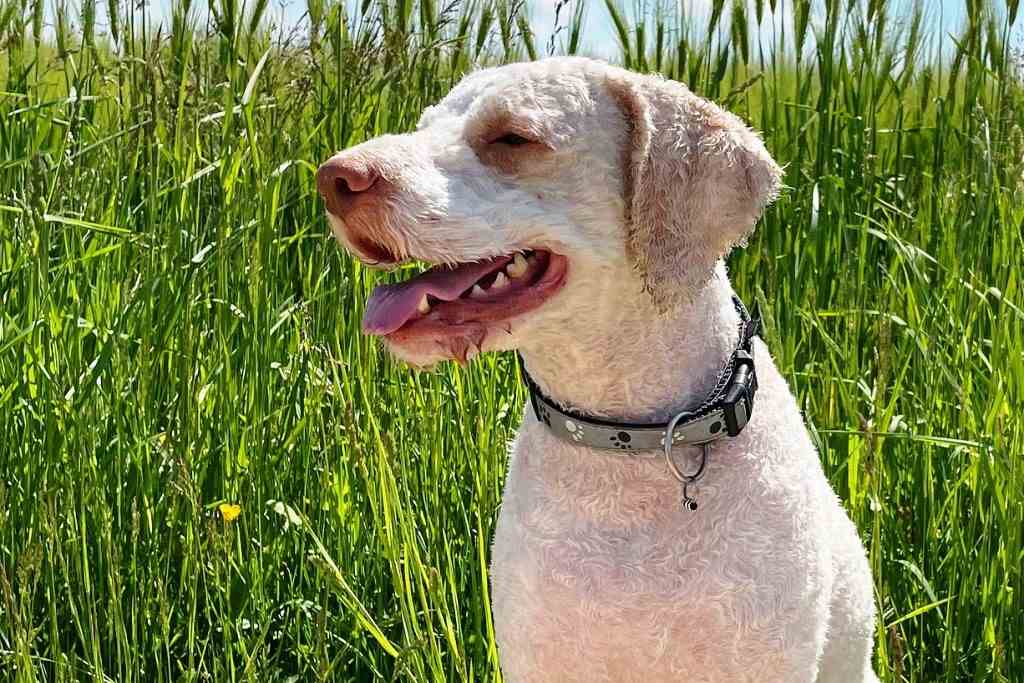The origin of the Lakeland terrier dog breed lies in the British Isles between the regions of Yorkshire, Westmoreland and Cumberland. The ancestors of the present-day Lakeland terrier were the Old English black and tan terrier, the Bedlington and the Border. The bedlington was subjected to cross-breeding to improve its temperament and the border to increase its robustness, giving it a hard, waterproof coat.
It was Lord Lonsdale, who was the first president of the lakeland terrier association, who gave the dog breed the name lakeland terrier, inspired by the lake landscape of his homeland.
Originally, the activity carried out by this small terrier was hunting. This activity helped forge its proud and courageous character. He would fearlessly hunt down foxes that approached his flock and chase them among the rocks and stones of northern England. He would discover the fox’s hiding place and would not even hesitate to kill it if necessary. They guarded the stables and kept away vermin, tackled types and rats. Today, the lakeland terrier is still clearly a hunting dog. It is tireless and always on the lookout for a task. Perfect for the hunt for which he was selected, being agile and determined, he is capable of killing prey bigger and stronger than himself.
Character of the lakeland terrier dog breed
The character of the lakeland terrier is a mixture: it can be friendly, cuddly, sensitive, stubborn, good-natured and very lively. It is a dog that is always on the move; running, jumping ditches and obstacles, playing wildly in the water, with other dogs, digging holes and chasing mice in the bushes are just some of the favourite activities of this very exuberant dog. It can live happily in a flat, in constant contact with its family, but cannot be shut indoors for hours at a time. He needs at least a couple of daily outings of more than half an hour. If we do not allow him his daily walks, he may suffer greatly. The ideal is a house with a garden where he can spend a few hours a day in the fresh air.
He is easily trained, because he is always ready to follow orders and obeys them immediately. At home it is a very docile companion dog, and if educated lovingly and consistently, it knows how to behave even in public places such as buses or restaurants. One of its character traits is jealousy; if its main person pays attention to another dog, the lakeland terrier will be very jealous.
With strangers it is rather reserved, and is therefore very well suited to being an excellent watchdog, as it is very good at signalling the presence of strangers to the family. In the home he shows himself to be polite and clean, a serious dog who does not make messes or petty vendettas, compared to many other terriers he is much quieter to keep in the home.
Another of its characteristics is the fact that it always stands on tiptoe, its muzzle is always very cheerful and cunning. In his relations with other dogs he is brave and confident, sometimes a little overbearing. As far as other small animals in the house are concerned, he will get along well with them if they are introduced into the house when they are still puppies. They have a tendency to bark, and hate being disturbed while eating, and can become aggressive if this happens.
Appearance of the lakeland terrier dog breed
The Lakeland terrier is a small to medium-sized dog; the height at withers for a male can be as high as 37 centimetres and weigh around 7 kilograms. Its physique is compact and muscular, balanced both in size and overall harmony. It is distinguished from other terriers by the conformation of its head and its particular type of fur. As for the tail, it is worn to wiggle merrily, but never over the back or twisted. Unfortunately, it is common practice in some countries, even today, to amputate it.
Its head is broad and short, the skull is long and flat, not too wide between the ears, narrowing towards the eyes, which are small and not sunken, dark or in shades of hazel. The truffle is usually black, except in specimens with a liver-coloured coat, which may match the coat. The ears have a medium hairline, are rather small and V-shaped, and are briskly carried.
The coat is made up of a woolly, warm undercoat and a short, very dense cover coat, which is hard and slightly curly to the touch. With regard to coat colour, several variations are possible. From black to blue, brown, beige to red, black and tan or blue and tan. Some specimens also have small white spots, usually on the chest or paws.
Health and care of the lakeland terrier dog breed
The health of the lakeland terrier is very good, with an average life span of 14 to 16 years. There are some diseases it can suffer from, although they are rare. We are talking about hereditary oculopathies, dislocations of the kneecap, which, however, a careful breeder manages to avoid. There are no known diseases typical of the breed.
As far as nutrition is concerned, these dogs are not prone to food allergies or intolerances. A balanced and healthy diet is sufficient to ensure the animal’s good development and health.
They do not tolerate too low temperatures, so it is advisable to keep them indoors during the winter.
As far as coat care is concerned, this is a little more demanding on the part of the dog owner. His coat must be trimmed regularly and professionally. Since dead hair does not fall out by itself, it must be cut by hand.


